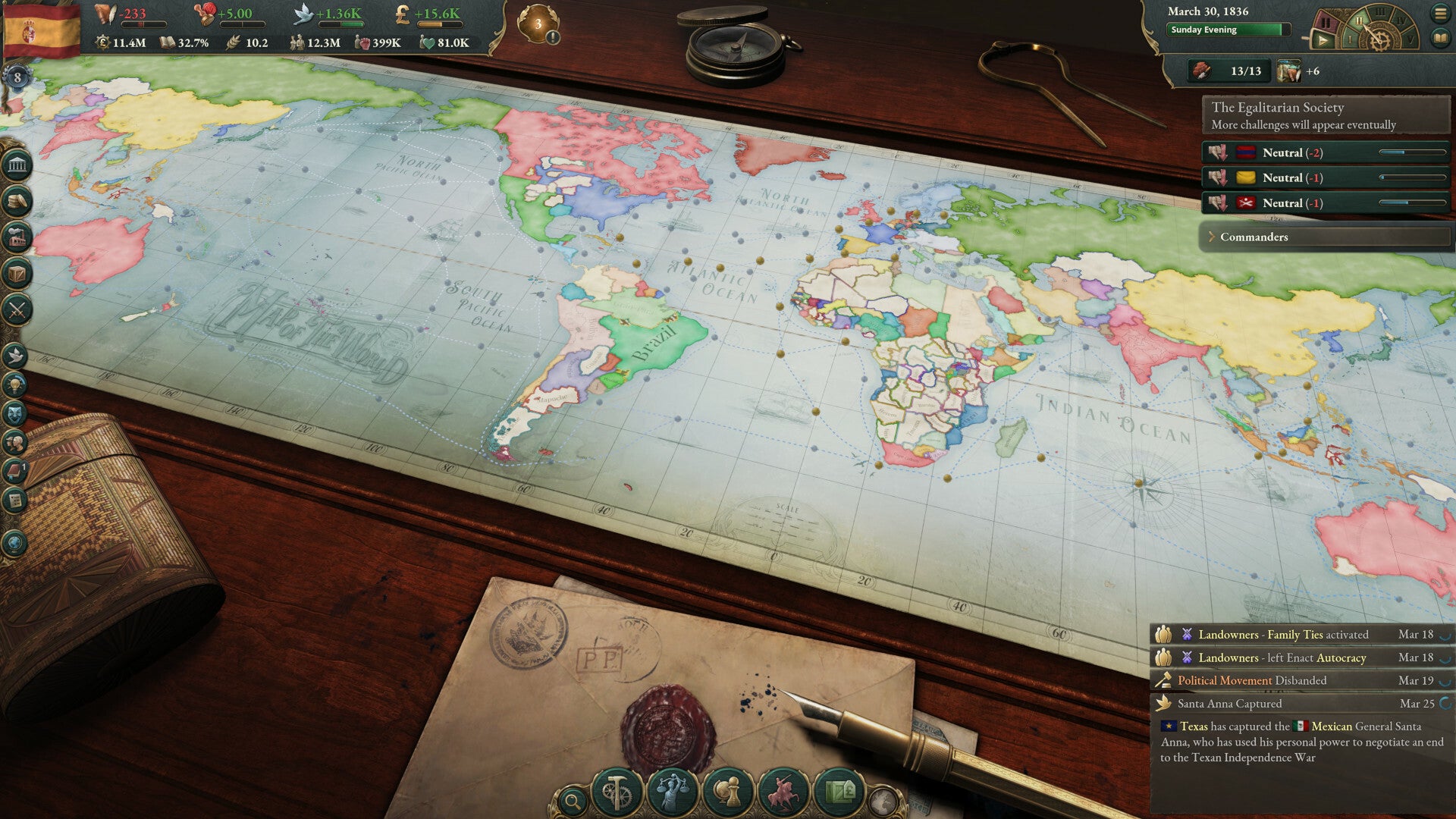Victoria 3 does for simulated economics what Crusader Kings 3 did for playing fuck, marry, kill with medieval popes. Paradox’s latest grand strategy is a vivid and engrossing depiction of a world undergoing rapid transformation, letting you plunge elbow-deep into its politics, social reforms, and dizzying technological change. Your focus may be on building ironworks and train stations rather than murdering close family members, but the impact of those infrastructural projects is often just as immediate, and just as gratifying.
Victoria 3 review
- Publisher: Paradox Interactive
- Developer: Paradox Interactive
- Platform: Played on PC
- Availability: Out 25th October on PC
Like Crusader Kings and Europa Universalis before it, Victoria 3 lets you pick a particular nation-state and do as you please with it. While there are game modes that focus on specific objectives like economic or military dominance, Victoria 3 is ultimately a giant strategic sandbox that lets you direct the winds of change however you choose. You could transform Victorian Britain into a socialist republic, rest a crown on the temples of Abraham Lincoln, or attempt to conquer the world as the East India Company.
While the options are extensive, they’re all funnelled through the same fundamental mechanisms, at the heart of which is your nation’s economy. Every country starts out in a different situation, but all economies are built upon a combination of exploiting natural resources, establishing industries, and trade with other nations. Crucially, these industries (and the items they produce) exist in a simulated market where the price of goods is constantly affected by the laws of supply and demand. These laws can have profound effects on the efficiency of your industries and your economy at large.
To give a brief example, let’s talk about coal, the fundamental resource upon which the industrial revolution is based. Coal is used in countless different industries in Victoria 3, and as such is in constant high demand. You can meet that demand in several ways, the simplest of which is to expand your existing coal mines (or create new ones in states where available). But mining coal requires tools, another basic resource that is also in high demand. As you expand your coal mines, the number of tools needed goes up, meaning so does the price. If the price of tools rises too high, it can render your coal mines unprofitable.
